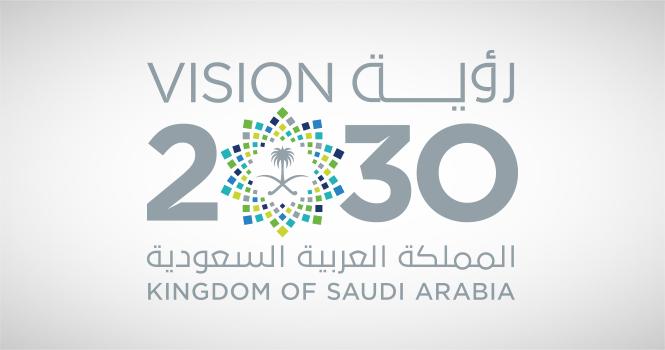
Vision 2030 KPIs in 2024
As Vision 2030 approaches the end of its second phase (2021-2025), the Kingdom continues to advance its national transformation agenda with discipline and determination. Progress in 2024 reaffirmed the strength of Vision 2030, translating long-term ambitions into tangible results across priority sectors.
In 2026, Vision 2030 will enter its third and final phase of delivery: a new chapter focused on entering full delivery mode, expanding opportunity across every sector, and sustaining the impact well beyond 2030.
While some indicators have faced technical or economic headwinds, corrective actions are underway and closely monitored. Vision 2030’s performance framework continues to evolve through enhanced measurement methodologies, developed in collaboration with international organizations to align with global best practices.
In some cases, indicators have been replaced with more precise alternatives to better reflect progress across transformation priorities, reinforcing the Vision’s adaptability to regional and global developments.
According to the report, Vision Realization Programs (VRPs) and national strategy key performance indicators (KPIs) are either fully achieved or on track for 2024.
| Vision 2030 KPIs | |
| Indicators currently have active readings | 374
|
| Indicators fully achieved | 299
|
| Indicators that surpassed targets | 257
|
| Indicators achieved between 85%-99% of their target | 49
|
Moreover, initiatives that were either completed or are progressing on track reached 85% of the total active initiatives that reached 1,502.
| Initiatives | |
| Total | 1502
|
| Initiatives completed | 674
|
| Initiatives on track | 596
|
| Vision 2030 Indicators/ Targets | |||
| Initiative / Indicator | Actual Value
| Target
| |
2024
| 2024
| 2030
| |
| Number of Saudi Sites on UNESCO World Heritage List (Sites) | 8
| 7
| 8
|
| Population Clusters, Including Remote Areas, Covered by Healthcare Services | 97.4 %
| 96.5 %
| 99.5 %
|
| Healthcare Services Quality Index | 59 %
| 49 %
| 82 %
|
| World Happiness Index | 6.6
(Rank: 32nd)
| 6.78
| 7.5
(Rank: 5th)
|
| Life Expectancy(Year) | 78.8
| 78.2
| 80
|
| Youth (5–17) Engaging in Daily Physical Activity (60 minutes) | 18.7 %
| 10 %
| 21 %
|
| Adults (18+) Engaging in Physical Activity (150 minutes/week) | 58.5 %
| 53 %
| 64 %
|
| Number of Foreign Umrah Pilgrims | 16.92
| 11.3
| 30
|
| Saudi Home Ownership | 65.4 %
| 64 %
| 70 %
|
| Financial Aid Beneficiaries Capable of Working Who Have Been Empowered | 33.7 %
| 32.5 %
| 38.3 %
|
| Global GDP Ranking (SAR bln) | 3514
| 3585
| 6500
|
| Non-Oil GDP | 2554
| 2606
| 4970
|
| Private Sector Contribution to GDP | 47 %
| 46 %
| 65 %
|
| Non-Oil Exports Share of Non-Oil GDP | 25.2 %
| 35 %
| 50 %
|
| Loans to SMEs as a Percentage of Total Bank Loans | 9.4%
| 10%
| 20%
|
| Local Content Share in the Oil & Gas Sector | 65.5 %
| 66 %
| 75 %
|
| Local Content Share in Non-Oil Sector Spending | 55.8 %
| 59 %
| 75 %
|
| Cumulative Value of Exports from Oil and Gas-Related Industries (SAR bln) | 718.74
| 746.5
| 2114
|
| Military Industry Localization Rate | 19.35 %
| 12.5 %
| 50 %
|
| Public Investment Fund’s (PIF) AUM (SAR tln) | 3.53
| 3.3
| 10
|
| Foreign Direct Investment (FDI) Share of GDP | 2.4 %
| 2.4 %
| 5.7 %
|
| Unemployment Rate Among Saudis | 7 %
| 7.8 %
| 5 %
|
| Human Development Index (HDI) (Score) | 0.875
| 0.875
| 0.94
|
| Percentage of Technical and Vocational Education Graduates Employed Within Six Months of Graduation | 47.81 %
| 50.7 %
| 65 %
|
| Percentage of University Graduates Employed Within 6 Months of Graduation | 43 %
| 41.2 %
| 75 %
|
| Women’s Labor Force Participation Rate | 33.5 %
| 35.9 %
| 40 %
|
| Number of Employees in SMEs (mln) | 7.86
| 7.1
| 10.23
|
| SMEs Contribution to GDP | 21.9 %
| --
| 35 %
|



























